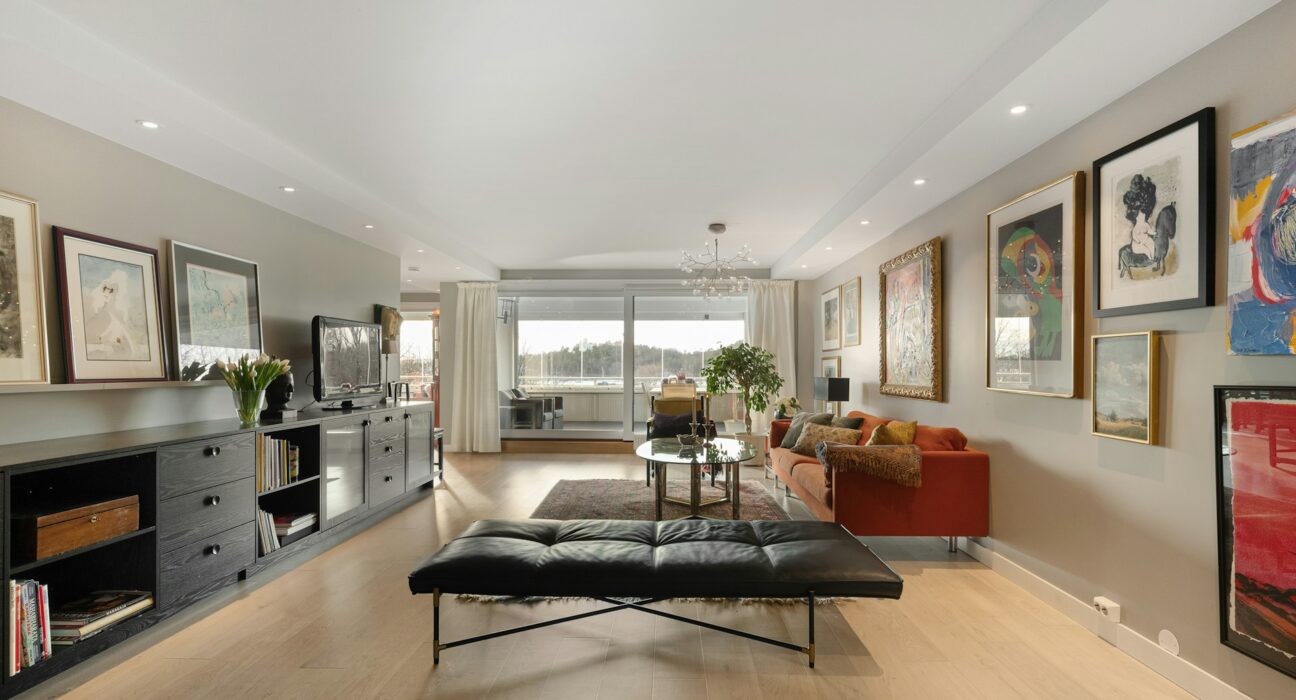Balancing sophisticated home design with the practical needs of children presents a unique challenge for modern families. Parents often feel forced to choose between a house that looks magazine-worthy and one that accommodates the reality of family life. The good news? You don’t have to sacrifice your aesthetic vision to create a space where kids can thrive.
Smart family lifestyle choices involve selecting materials, colors, and layouts that serve multiple purposes. When done thoughtfully, kid-friendly decor enhances rather than detracts from your overall design goals. The key lies in understanding which elements can pull double duty—looking beautiful while standing up to the wear and tear of daily family life.
This approach to home design recognizes that family homes should evolve with their inhabitants. Rather than viewing children’s needs as obstacles to overcome, successful family spaces integrate these requirements seamlessly into the overall aesthetic vision.
Building Your Foundation: Materials That Perform and Impress
The backbone of any successful family space lies in choosing materials that can handle whatever life throws at them while maintaining their visual appeal over time.
Flooring Solutions That Endure
Luxury vinyl plank flooring has revolutionized family-friendly home design by offering wood-look aesthetics with superior durability. These products resist scratches, moisture, and stains while providing the warmth and beauty of natural materials. Unlike traditional hardwood, luxury vinyl can handle spilled juice, muddy shoes, and toy cars without showing permanent damage.
Polished concrete floors create an industrial-chic foundation that’s virtually indestructible. When sealed properly, concrete resists stains and requires minimal maintenance while offering endless customization through staining, scoring, or aggregate exposure. Area rugs can soften the look and provide comfort underfoot while being easily washable or replaceable.
For families preferring traditional materials, engineered hardwood offers greater stability than solid wood while maintaining authentic wood character. Look for products with aluminum oxide finishes, which provide exceptional scratch resistance without sacrificing the natural beauty of wood grain.
Upholstery That Lives Well
Performance fabrics have transformed family furniture from fragile showpieces into functional design elements. Modern performance textiles offer stain resistance, easy cleaning, and surprising softness while maintaining sophisticated appearances. Crypton and similar technologies create barriers against spills and odors while feeling like traditional upholstery.
Leather remains an excellent choice for family homes, particularly top-grain varieties that develop character over time. Leather naturally resists many stains and wipes clean easily, while scratches and scuffs often enhance rather than detract from its appearance. Consider leather in rich, medium tones that hide minor imperfections better than very light or very dark options.
Color Strategies That Hide and Delight
Strategic color choices can camouflage the inevitable messes while creating visual interest throughout your home.
The Power of Pattern and Texture
Incorporating subtle patterns into your design scheme helps disguise fingerprints, pet hair, and minor stains that accumulate in family homes. Geometric patterns, organic textures, and varied finishes all contribute to this practical magic while adding visual depth to your spaces.
Textured wall treatments like grasscloth, subtle metallic finishes, or dimensional paint techniques create interest while being more forgiving than flat, solid colors. These surfaces naturally camouflage handprints and scuffs while contributing to your overall aesthetic vision.
Strategic Neutrals with Personality
Building your palette around sophisticated neutrals provides flexibility while hiding everyday wear. Warm grays, soft beiges, and muted earth tones create calm backgrounds that complement both adult sensibilities and children’s colorful belongings. These colors also provide excellent foundations for seasonal decorating and easy updates as tastes evolve.
Consider incorporating deeper accent colors through easily changeable elements like pillows, artwork, and accessories. This approach allows you to satisfy both your design preferences and your children’s desire for color without committing to permanent installation of bright hues.
Furniture Selection: Form Meets Function
Choosing pieces that serve multiple purposes maximizes both style and practicality in family homes.
Storage Solutions That Disappear
Built-in storage maintains clean lines while providing essential organization for family life. Window seats with hidden storage, built-in bookcases, and custom cabinetry create seamless solutions that don’t compromise your design aesthetic. These permanent installations add value to your home while solving ongoing organizational challenges.
Ottoman storage pieces serve as seating, footrests, and toy storage while maintaining sophisticated appearances. Choose options with removable, washable covers for maximum practicality, or select leather versions that age gracefully.
Multi-Purpose Seating
Dining benches offer flexible seating that accommodates varying numbers of people while taking up less visual space than individual chairs. Many bench designs include storage compartments, further maximizing their utility. When not in use for dining, benches can serve as extra seating in living areas or provide surfaces for folding laundry.
Sectional sofas with removable, washable covers provide ample seating for family gatherings while offering easy maintenance. Look for pieces with performance fabrics or leather that can handle daily use while maintaining their sophisticated appearance.
Creating Zones Within Open Spaces
Modern family lifestyle often centers around open floor plans that require careful zoning to function well for all family members.
Defining Areas Without Walls
Area rugs serve as invisible boundaries that define specific zones within larger spaces. A large rug under the main seating area creates a living room zone, while a smaller rug under a child’s play table establishes a dedicated activity area. Choose rugs in patterns or colors that can handle stains and frequent cleaning.
Furniture placement creates natural boundaries between adult and child spaces without requiring physical barriers. A sofa positioned to define the living area can have a play zone behind it, keeping toys contained while maintaining sight lines for supervision.
Height Variations for Visual Interest
Incorporating furniture and decor at various heights creates visual interest while serving different family members’ needs. Low shelving allows children to access their belongings independently, while higher shelves display adult decorative items safely out of reach.
Floor cushions and low seating options accommodate children’s scale while providing flexible seating for adults during casual gatherings. These pieces can be easily moved or stored when not needed, maintaining the sophisticated appearance of your main furniture arrangement.
Lighting for Every Occasion
Layered lighting serves both aesthetic and practical purposes in family homes.
Ambient Lighting Strategies
Ceiling-mounted fixtures with dimmer controls provide adjustable ambient lighting that can transition from bright task lighting during homework time to soft mood lighting for adult entertaining. Choose fixtures that complement your overall design aesthetic while providing adequate light output for family activities.
Floor lamps and table lamps create pools of warm light that make spaces feel more intimate while providing targeted illumination for reading or crafts. Select lamps with sturdy bases that won’t easily tip over, and consider cordless options for maximum safety around young children.
Natural Light Maximization
Window treatments that filter rather than block natural light maintain bright, cheerful spaces while providing privacy and light control. Cellular shades, light-filtering blinds, and sheer curtains offer various levels of light control while contributing to your overall design scheme.
Consider the orientation of your windows when planning furniture placement and color schemes. Rooms with abundant natural light can handle darker colors and more dramatic design choices, while north-facing rooms benefit from lighter colors and reflective surfaces.
Making It Work Long-Term
Successful family-friendly home design considers how spaces will evolve as children grow and family needs change.
Flexible Design Elements
Choose foundational pieces that can adapt to changing needs over time. A coffee table that converts to a dining table, modular seating that can be reconfigured, and adjustable shelving systems all provide long-term value by adapting to your family’s evolving requirements.
Neutral backgrounds allow you to update accessories, artwork, and accent pieces as your family’s tastes and needs change. This approach provides longevity while allowing for periodic refreshes that keep your space feeling current and personal.
Investment Pieces Worth Making
Quality foundational elements like flooring, built-in storage, and major furniture pieces justify higher upfront investments through their durability and timeless appeal. These elements form the backbone of your design and should be selected for their ability to withstand years of family life while maintaining their aesthetic appeal.
Consider the lifecycle costs of your choices, including maintenance, replacement, and updating requirements. Sometimes spending more initially results in lower long-term costs and better performance over time.
Your Beautiful, Livable Home Awaits
Creating a space that satisfies both your design aspirations and your family’s practical needs requires thoughtful planning and strategic choices. The most successful family homes integrate these requirements so seamlessly that visitors might not immediately recognize the careful consideration behind each decision.
Start with one room or area and implement these principles gradually. As you see how well-chosen materials and thoughtful design decisions improve your daily life, you’ll gain confidence to apply these strategies throughout your home. Remember that the best family-friendly design doesn’t announce itself—it simply works beautifully for everyone who lives there.
The investment in creating truly functional family spaces pays dividends in daily comfort, reduced stress, and spaces you’ll be proud to share with friends and family for years to come.







